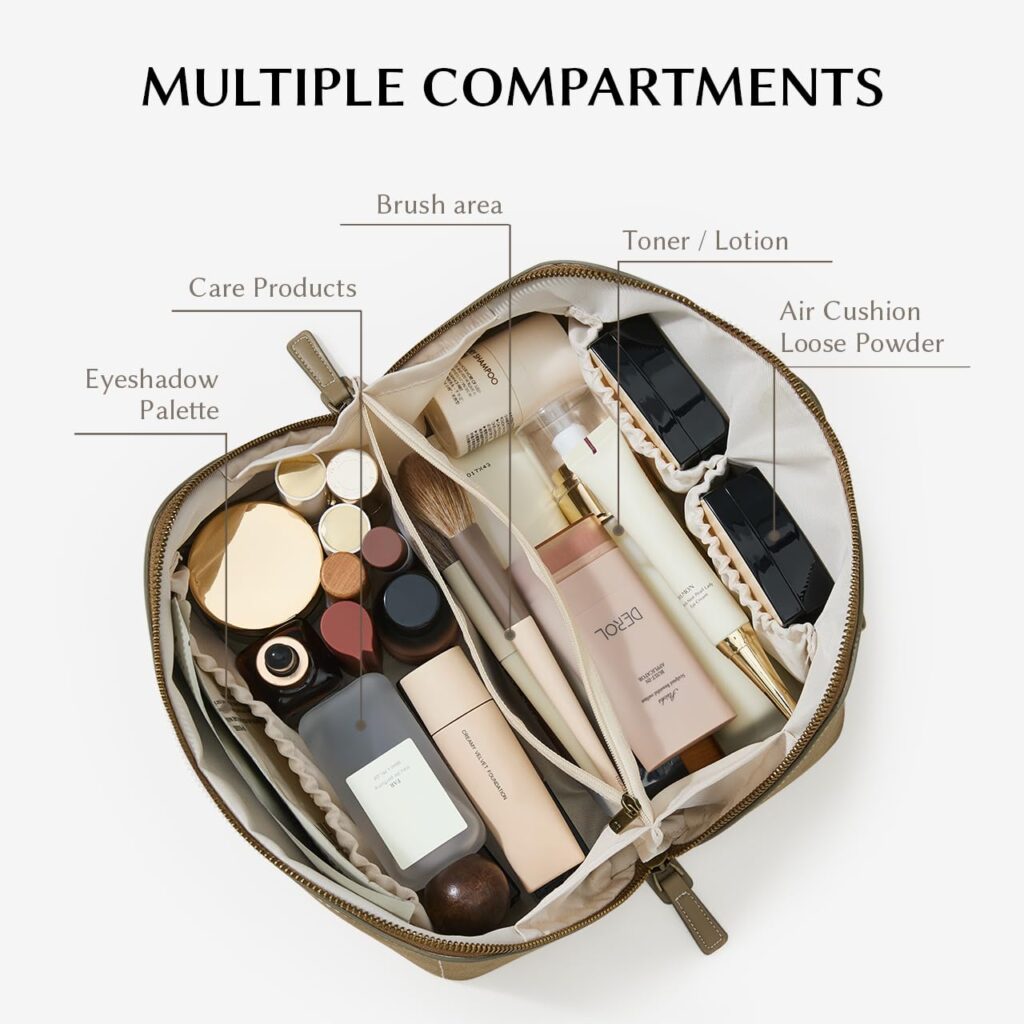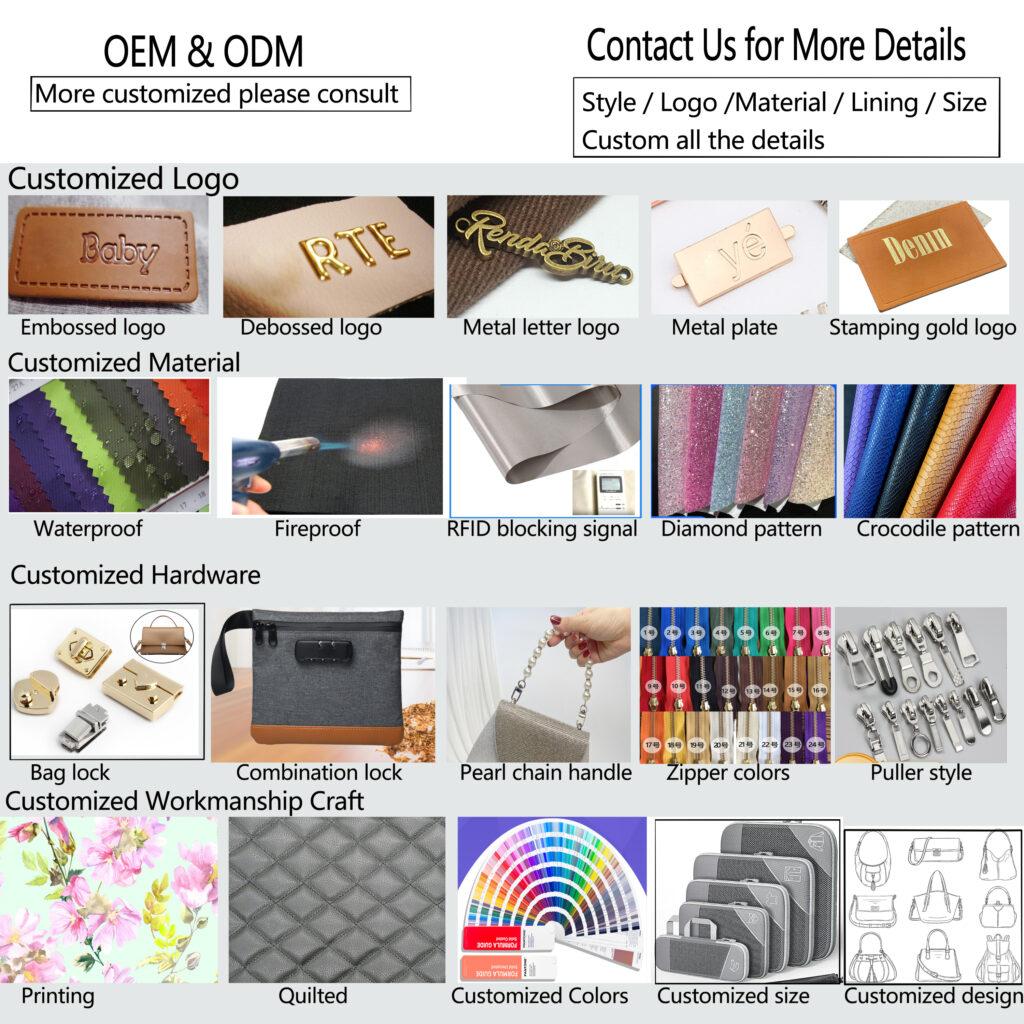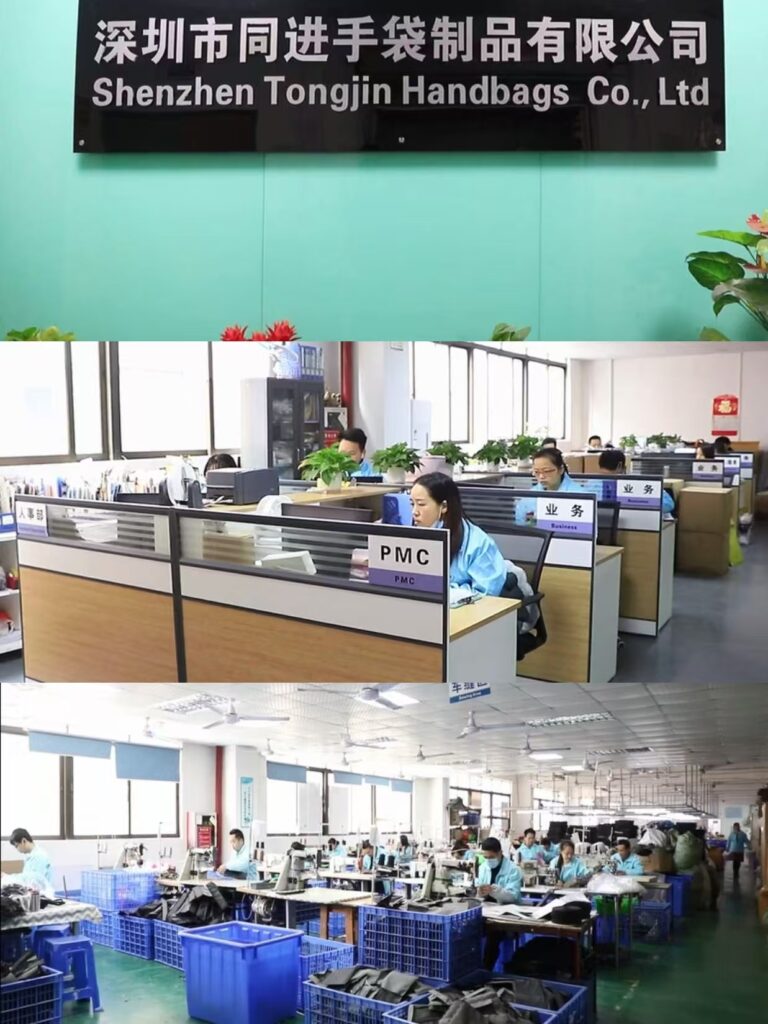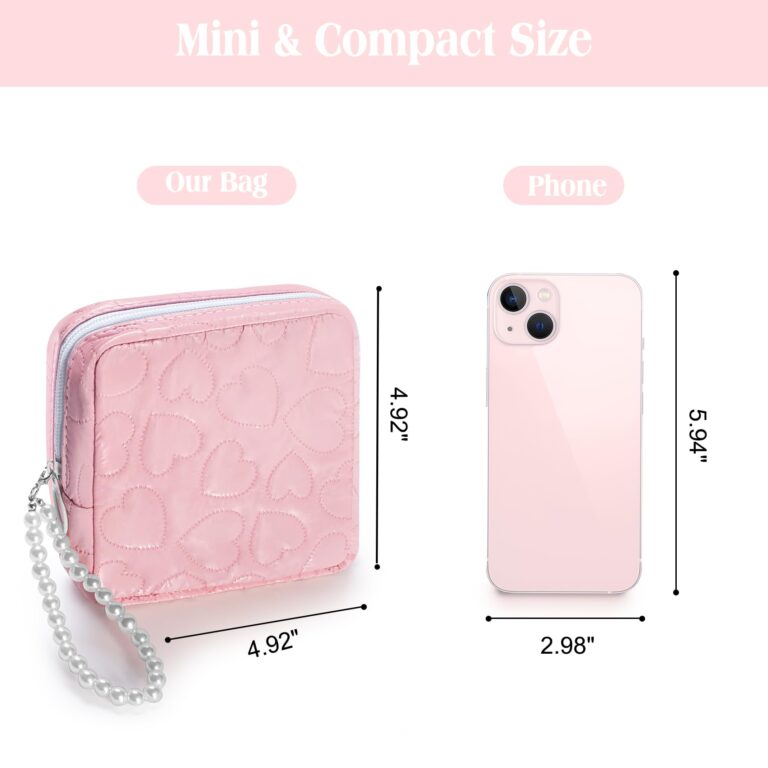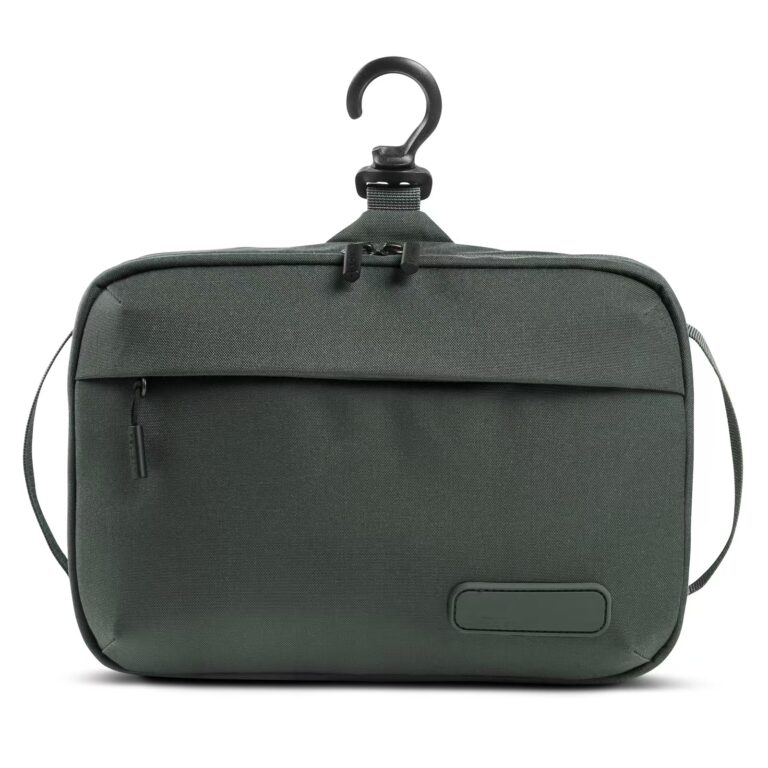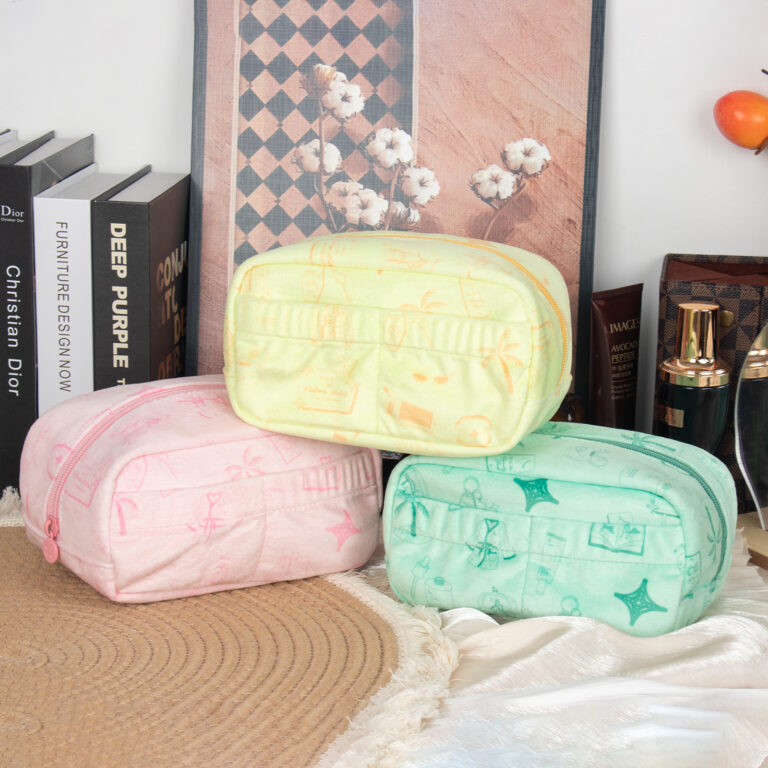Small Bag for Cosmetics: The Rise of Low-Carbon Production in Beauty Packaging
In an era where environmental consciousness has become a global imperative, the beauty industry is undergoing a significant transformation. Consumers are no longer just seeking functional and stylish cosmetics; they are demanding sustainability in every aspect of the products they purchase, including packaging. The humble “small bag for cosmetics,” once a mere accessory, has emerged as a key player in this green revolution, with low-carbon production at its core. This article explores how low-carbon manufacturing is reshaping the design, 材料, and production processes of cosmetic bags, while meeting the evolving needs of eco-conscious consumers.
The Growing Demand for Sustainable Cosmetic Packaging
The beauty industry has long been associated with excessive waste, with millions of tons of non-recyclable packaging ending up in landfills each year. Cosmetic bags, though small in size, play a crucial role in this narrative. These bags are not only used for transporting makeup and skincare products but also serve as a branding tool for beauty companies. As consumers become more aware of their environmental footprint, they are increasingly looking for products that align with their values. A 2024 survey by NielsenIQ found that 78% of global consumers are willing to pay more for sustainable packaging, indicating a strong market shift towards eco-friendly solutions.
Low-carbon production in the context of cosmetic bags refers to manufacturing processes that minimize greenhouse gas emissions, reduce energy and water consumption, and utilize sustainable materials. This approach not only addresses environmental concerns but also meets the expectations of a new generation of consumers who view sustainability as a non-negotiable factor in their purchasing decisions. Beauty brands that embrace low-carbon production for their cosmetic bags are not only contributing to global climate goals but also gaining a competitive edge in a crowded market.
Materials Matter: The Shift to Sustainable Resources
One of the foundational pillars of low-carbon production for cosmetic bags is the use of eco-friendly materials. Traditional cosmetic bags are often made from synthetic fabrics like polyester or nylon, which are derived from petroleum and have a high carbon footprint. In contrast, sustainable alternatives are gaining popularity, offering both environmental and functional benefits.
Organic Cotton and Linen
Organic cotton is grown without the use of harmful pesticides or synthetic fertilizers, reducing water pollution and soil degradation. It requires up to 91% less water than conventional cotton, making it a prime choice for low-carbon production. Linen, derived from the flax plant, is another sustainable option. Flax grows quickly and requires minimal irrigation, and its production generates significantly fewer greenhouse gases. Both materials are breathable, durable, and can be easily dyed using natural pigments, adding to their appeal for eco-conscious brands.
Recycled Plastics and Polyester
The transformation of post-consumer waste into new materials is a key strategy in low-carbon production. Recycled polyethylene terephthalate (rPET), made from recycled plastic bottles, is now widely used in cosmetic bags. This material has the same quality and durability as virgin polyester but reduces carbon emissions by up to 59%. Brands like Patagonia and Aesop have been pioneers in using rPET in their packaging, setting a precedent for the industry. Recycled nylon, often made from fishing nets and other industrial waste, is another sustainable alternative, closing the loop on plastic waste and reducing reliance on fossil fuels.
Biodegradable and Compostable Fabrics
For brands aiming for a zero-waste cycle, biodegradable and compostable materials are the ultimate solution. Fabrics like hemp, bamboo, and mushroom-based mycelium are not only sustainable but also offer unique textures and aesthetics. Hemp grows rapidly without the need for pesticides and enriches the soil as it grows. Bamboo is one of the fastest-growing plants on earth, regenerating quickly and requiring minimal resources. Mycelium, a network of fungal threads, can be grown in controlled environments, creating a completely biodegradable material that breaks down naturally without harming the environment.
Low-Carbon Production Processes: From Design to Delivery
Beyond material selection, the entire production process of cosmetic bags must be optimized for low carbon emissions. This involves rethinking every stage, from design and manufacturing to transportation and end-of-life disposal.
Energy-Efficient Manufacturing
Factories adopting low-carbon practices are investing in energy-efficient technologies, such as solar-powered machinery and LED lighting. Renewable energy sources like wind and solar are increasingly being used to power production facilities, reducing reliance on fossil fuels. さらに, advanced manufacturing techniques like laser cutting and digital printing minimize material waste and energy consumption. These technologies allow for precise cutting of fabrics, reducing off-cuts, and enable waterless printing processes, further lowering the environmental impact.
Water and Waste Management
Water is a critical resource in textile production, and low-carbon facilities are implementing strict water management systems. Wastewater from dyeing and finishing processes is treated and recycled on-site, reducing freshwater usage by up to 70%. In terms of waste, zero-waste design principles are being adopted, where patterns are designed to utilize every inch of fabric. Leftover materials are either recycled into new products or donated to craft projects, ensuring no waste goes to landfills. Some brands even offer take-back programs for their cosmetic bags, allowing customers to return old bags for recycling, creating a closed-loop system.
Sustainable Supply Chains
A low-carbon supply chain is essential for reducing the overall carbon footprint of cosmetic bags. Brands are now sourcing materials locally whenever possible, reducing transportation emissions. 例えば, a brand based in Europe might source organic cotton from Turkish farms rather than importing it from distant countries. さらに, blockchain technology is being used to trace the origin of materials, ensuring transparency and accountability in the supply chain. This not only helps in reducing emissions but also builds trust with consumers who value ethical production practices.
Designing for Durability and Functionality in a Low-Carbon World
While sustainability is paramount, cosmetic bags must still be functional and appealing to consumers. Low-carbon design focuses on creating products that are durable, versatile, and aesthetically pleasing, ensuring they have a long lifespan and reduce the need for frequent replacements.
Minimalist and Versatile Designs
Gone are the days of overly elaborate cosmetic bags with excessive features. Modern low-carbon designs embrace minimalism, using clean lines and neutral colors that appeal to a wide audience. Versatility is key, with bags designed to be used for multiple purposes – as a makeup bag, a travel organizer, or even a clutch for everyday use. This dual functionality extends the product’s life cycle, reducing waste as consumers find more uses for it.
Durability as a Sustainability Feature
Investing in high-quality materials and craftsmanship is essential for low-carbon production. A durable cosmetic bag that lasts for years has a lower environmental impact than a cheaper, disposable alternative, even if the initial production has a slightly higher carbon footprint. Reinforced stitching, sturdy zippers, and fade-resistant dyes are features that enhance durability, making the bag a long-term companion for the user.
Eco-Friendly Branding and Packaging
Branding elements on cosmetic bags are also being reimagined through a low-carbon lens. Water-based inks and 烫印 (hot stamping) with recycled metals are replacing traditional plastic-based logos. Some brands are even opting for minimal branding or using natural dyes to print their logos, ensuring that every aspect of the bag, including the branding, is sustainable.
The Role of Consumers in Promoting Low-Carbon Production
Consumers play a pivotal role in driving the adoption of low-carbon cosmetic bags. By choosing products from brands that prioritize sustainability, they send a clear market signal that environmental responsibility is important. Here’s how consumers can contribute:
Informed Purchasing Decisions
Taking the time to research a brand’s sustainability practices before purchasing is crucial. Looking for certifications like GOTS (Global Organic Textile Standard) or OEKO-TEX Standard 100 can help identify products that meet strict environmental and safety standards. Reading product descriptions to check for sustainable materials and low-carbon production processes allows consumers to make informed choices.
Supporting Circular Economy Initiatives
Participating in take-back programs and recycling old cosmetic bags helps close the loop on waste. Some brands offer discounts or rewards for returning used bags, encouraging consumers to be part of the circular economy. さらに, repairing rather than replacing damaged bags and repurposing them for different uses extends their lifecycle and reduces environmental impact.
Spreading the Word
Social media and word-of-mouth are powerful tools for promoting low-carbon products. Sharing positive experiences with sustainable cosmetic bags and tagging the brands involved can help raise awareness and inspire others to make eco-friendly choices. Consumer advocacy can drive more brands to adopt low-carbon practices, creating a ripple effect in the industry.
Case Studies: Brands Leading the Low-Carbon Charge
Several beauty and fashion brands have already made significant strides in producing low-carbon cosmetic bags, serving as inspirations for the industry.
Aesop: Luxury Meets Sustainability
Aesop, a premium skincare brand, is known for its minimalist aesthetic and commitment to sustainability. Their cosmetic bags are made from rPET fabric derived from recycled plastic bottles, and the brand uses waterless dyeing techniques to reduce water consumption. Aesop also ensures that all their packaging, including the bags, is recyclable and encourages customers to return old bags for proper recycling.
The Body Shop: Community and Sustainability
The Body Shop has long been a champion of ethical beauty. Their cosmetic bags are made from organic cotton and recycled materials, with a focus on supporting fair-trade communities. The brand’s “Enrich Not Exploit” campaign ensures that their production processes are low-carbon and socially responsible, from sourcing to manufacturing.
Patagonia: Outdoor Brand Goes Beauty
While primarily an outdoor brand, Patagonia’s foray into beauty packaging includes sustainable cosmetic bags made from recycled nylon and organic cotton. The brand’s “Worn Wear” program, which encourages repairing and recycling products, extends to their cosmetic bags, promoting a culture of durability and sustainability.
Challenges and the Path Forward
Despite the progress, challenges remain in scaling up low-carbon production for cosmetic bags. The higher initial cost of sustainable materials and technologies can be a barrier for some brands, especially smaller ones. There is also a need for standardized certifications and regulations to ensure transparency and prevent greenwashing. しかし, as consumer demand grows and economies of scale come into play, the cost gap is expected to narrow.
Innovation is key to overcoming these challenges. Researchers are continually developing new sustainable materials, such as algae-based fabrics and recycled ocean plastics, while advancements in technology are making energy-efficient manufacturing more accessible. Collaboration between brands, manufacturers, and policymakers will be essential in creating a supportive ecosystem for low-carbon production.
結論: A Small Bag with a Big Impact
の “small bag for cosmetics” has evolved from a simple accessory to a symbol of the beauty industry’s commitment to sustainability. Through low-carbon production, these bags are now part of a larger movement towards reducing environmental impact, one stitch at a time. By embracing sustainable materials, energy-efficient processes, and circular economy principles, brands can create cosmetic bags that are not only functional and stylish but also contribute to a healthier planet.
As consumers, our choices hold the power to drive change. By prioritizing low-carbon products, we encourage more brands to adopt sustainable practices, fostering a future where beauty and responsibility go hand in hand. The journey towards a fully sustainable beauty industry may be long, but the humble cosmetic bag, produced with care for the environment, proves that even the smallest items can make a significant difference in the fight against climate change.
In embracing low-carbon production for cosmetic bags, we are not just packaging beauty – we are packaging hope for a more sustainable future.
Tags:化粧品袋,tactical backpack
お問い合わせ 卸売見積もりについて

